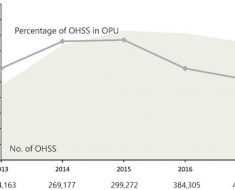Study challenges link between low birth weight and childhood neurodevelopmental issues
Several epidemiological studies have suggested a link between being born too small and abnormal neurodevelopment in childhood and later life. However, there is little evidence that these factors are causally related to a hostile intrauterine environment. A new study in JAMA Psychiatry discusses this topic in greater depth.
 Study: Intrauterine growth and offspring neurodevelopmental traits: a Mendelian Randomization analysis of the Norwegian mother, father and child cohort study (MoBa). Image Credit: Blue Planet Studio / Shutterstock.com
Study: Intrauterine growth and offspring neurodevelopmental traits: a Mendelian Randomization analysis of the Norwegian mother, father and child cohort study (MoBa). Image Credit: Blue Planet Studio / Shutterstock.com
Background
The developmental origins of health and disease hypothesis states that health and disease, such as cardiometabolic health, are determined by early development, including in utero and early infancy.
Birth weight has often been used to represent intrauterine growth and, as a result, has been a variable of interest in multiple neurodevelopment studies. Earlier research has been largely observational, which increases the potential for confounding biases. Thus, many observed associations between birth weight and future health outcomes may be non-causal correlations due to conflicting results from these studies.
Mendelian randomization (MR) allows researchers to explore the degree of causality in exposure-outcome associations without the need for a randomized controlled trial, which is the gold standard for investigational research. MR depends on the association between genetic variants associated with the exposure being studied and the outcome of interest. These factors are less likely to suffer from confounding or reverse causality than the variables usually employed during epidemiological research.
Previous MR-based studies have explored associations between other offspring traits and pregnancy exposures with later cardiometabolic health but not with neurodevelopmental outcomes.
About the study
The current study is based on data from the Norwegian Mother, Father and Child Cohort Study (MoBa), a pregnancy cohort based on a population sample. The study was conducted between June 1999 and December 2008 and included genotypes and other data from over 114,000 children born to over 95,000 women and 75,000 fathers.
These data were analyzed to identify causal associations between the genetic variants that affect birth weight, which was used as a proxy for intrauterine growth and neurodevelopment in the offspring. Both maternal and fetal gene variants were used to explore whether an inhospitable intrauterine environment, poor fetal growth, or both affected the risk of abnormal neurodevelopmental deficits.
Testing whether maternal birthweight-associated SNPs are also associated with offspring NDDs (conditional on offspring genotype at the same loci) is informative regarding causality.”
Thus, an adverse maternal environment, as shown by the adverse maternal gene variants, could be used to predict future neurodevelopmental outcomes in the offspring.
What did the study show?
Neurodevelopment in children was examined at five time points between six months to eight years of age. More specifically, the children were assessed for language problems, motor dysfunction, attention issues, hyperactivity and impulsivity, difficulties with social communication, and repetitive behaviors. As expected from earlier studies, multiple negative associations were observed using conventional epidemiological tools.
The causality of the observed epidemiologic association was evaluated using MR, which relies on maternal, paternal, and fetal allele or gene variant scores that have been consistently and strongly associated with birth weight.
The researchers classified the alleles into different sets. The first set comprised maternal variants associated with birth weight and neurodevelopmental outcomes in children, thus implying the effect of the intrauterine environment on the child’s neurodevelopment.
The second set includes maternal and fetal alleles linked to birth weight and neurodevelopment. The third set consisted of fetal alleles linked to birth weight, which was used to imply fetal influences on neurodevelopment.
All of the allele scores, whether of the father, mother, or offspring, were linked to a significant increase in the birth weight.
Autism-related traits were increased inversely with birth weight at all time points. These included reduced social communication and restricted or repetitive behavior at three years, attention-deficit hyperactivity disorder (ADHD) traits at 18 months and three years, and disruptive behavior traits including ADHD, hyperactive-impulsive behavior, and inattention at eight years. Motor difficulty was also observed at 18 months and five years.
There was some limited evidence that fetal genetic variants were associated with these neurodevelopment risks. No significant relationship was observed between maternal variants linked to intrauterine growth and future impacts on neurodevelopment.
What are the implications?
The current well-powered study failed to identify any causal link between maternal genetic influences on birth weight and offspring neurodevelopmental deficits. Thus, the maternal intrauterine environment does not appear to be a significant cause of these disorders.
Nevertheless, some evidence suggests that fetal genetic variants may play a limited role in determining the risk of these deficits in low-birth-weight babies, which explains the consistent observations reported in conventional epidemiological studies. However, these MR associations must be validated in future studies.
The current study only examined variants that affect birth weight and excluded other factors that may lead to undesirable neurodevelopmental outcomes like gestational diabetes. Thus, additional MR studies incorporating a wide range of different perinatal exposures are needed to elucidate the association between early life exposures and offspring neurodevelopment.
- D’Urso, S., Moen, G., Hwang, L., et al. (2023). Intrauterine growth and offspring neurodevelopmental traits: a Mendelian Randomization analysis of the Norwegian mother, father and child cohort study (MoBa). JAMA Psychiatry. doi:10.1001/jamapsychiatry.2023.3872, https://jamanetwork.com/journals/jamapsychiatry/fullarticle/2811311
Posted in: Child Health News | Medical Research News | Medical Condition News | Women's Health News
Tags: Allele, Autism, Birth Weight, Cardiometabolic, Children, Diabetes, Gene, Genetic, Gestational Diabetes, Hyperactivity, In Utero, Inattention, Language, Pregnancy, Prenatal, Psychiatry, Research

Written by
Dr. Liji Thomas
Dr. Liji Thomas is an OB-GYN, who graduated from the Government Medical College, University of Calicut, Kerala, in 2001. Liji practiced as a full-time consultant in obstetrics/gynecology in a private hospital for a few years following her graduation. She has counseled hundreds of patients facing issues from pregnancy-related problems and infertility, and has been in charge of over 2,000 deliveries, striving always to achieve a normal delivery rather than operative.





